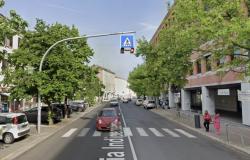The ceremony of the 334th physiocritical year opened with “The song of the whale”, a tribute to the Sienese institution fifty years after the discovery near Piombino of the fin whale whose skeleton exposed in the courtyard is now the icon of the Accademia dei Fisiocritici and the symbol of its natural history museum. The piece, composed by Maestro Concetta Anastasi, will be performed by the Unconventional Singers, Amat’s a cappella vocal group.
“Where is the Academy today? Where is it going?”: with these words the President of the Academy of Fisiocritics Giuseppe Manganelli began in his inauguration speech. “The word that seems to best describe the present moment of its history – continued the president – is growth. In fact, 2023 recorded significant progress from many points of view: projects, initiatives, offer, research, communication, publishing, training, admissions, resources, improvements to the headquarters”. The multi-year projects are the present and future of one of the oldest Italian scientific institutions which today is more alive than ever and is aimed primarily at young people. “Long-term projects – stated the president – highlight the role of the Academy and the Museum as entities close to citizens, spark participatory networks and connections between similar entities”. “Siena BiodiverCity” (English) is already two years old, the project conceived by the Natural History Museum as part of the Reset program of the MPS Foundation, which aims to survey Siena’s urban biodiversity and create knowledge and environmental respect through various citizen science activities, such as the BioBlitz, which involve citizens, and above all children and young people.
“It’s called “weCult” – continued Manganelli – an innovative communication project, born again with the contribution of the Reset call and developed by the Academy with other cultural and artistic entities in the area: a digital platform designed for and with young people who the aim is to attract young people under 30 to the cultural experience”. The third project is now being born because weCULT continues by connecting to “BAD-Bottega d’Arte Digitale”, a training project also from the Reset area: both will be part of “a new platform of integrated services that will act on four areas: training, communication with the youth world, school, fundraising”.
Finally, the president announced the online launch of the new website www.museostorianaturalesiena.it and the extension of the museum’s opening hours to include public holidays with the ambitious goal of reaching 20,000 admissions in 2024.
Highly current issues were touched upon in his speech by Matteo Guidotti, senior researcher at the Institute of Chemical Sciences and Technologies of the Cnr in Milan, member of the Scientific Advisory Council of the Organization for the Prohibition of Chemical Weapons in The Hague and president of the Commission Italian at the International Union of Pure and Applied Chemistry (Iupac). His title “The Two-Faced Janus of Chemistry: wrong uses, ethical choices and molecules that have made history” clearly alluded to the eternal dilemma between ethics and science: scientists, after obtaining a new chemical substance, have often asked themselves whether the benefits linked to the use of these molecules in medicine, in agriculture, in industry or in daily life were truly greater than the potential risks of causing damage to humans and the environment, in terms of danger or toxicity. Guidotti focused on a series of emblematic substances with some notes relating to the history of their discovery, diffusion and application. Among these, he recalled gaseous chlorine, a powerful disinfectant, but also a chemical weapon since the First World War, TNT, originally used as a dye, later found use as an explosive or fentanyl, a drug that made long surgical operations under anesthesia possible total, but whose use as an extreme drug is spreading in the United States, causing thousands of deaths per year.
Matteo Guidotti deals with nanostructured solid materials for the abatement and decontamination of dangerous substances and catalysts for the sustainable transformation of raw materials of plant origin. He carries out technical-scientific dissemination and training activities on the topic of prevention and protection from chemical, biological, radiological and nuclear risks. He is Director of the magazine “La Chimica e l’Industria” of the Italian Chemical Society.






